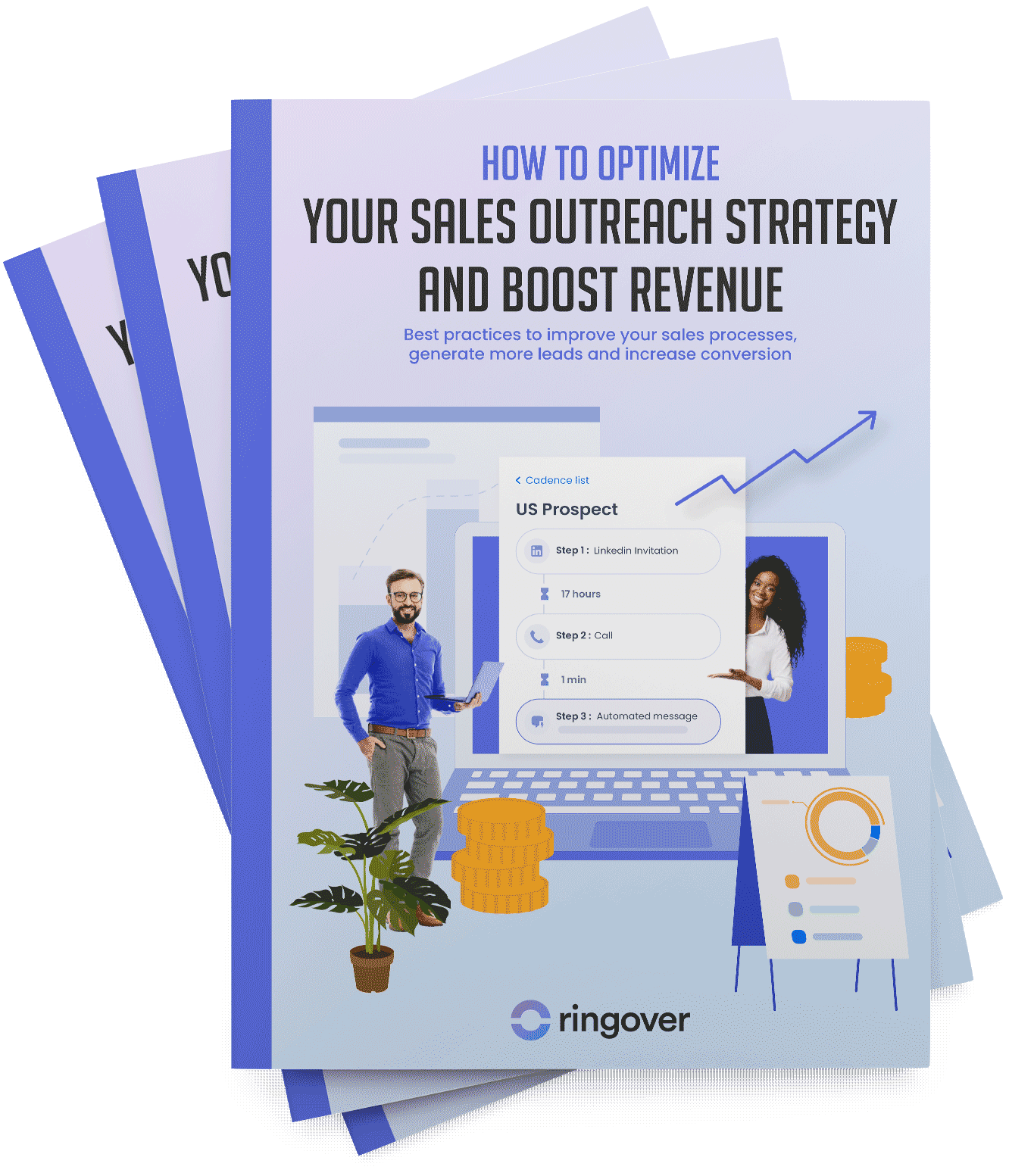Summary
As the power of social media grows, it's essential for businesses to be aware of new trends and more effective approaches to reach their target audience. If you are looking to improve your sales skills in the digital environment and open up new busines opportunities, this article will provide you with the information and examples you need to get your journey in Social Selling off to a winning start.
We will explain what Social Selling is and how it can be used to generate successful sales on social media. We will discover the key techniques that sales professionals are adopting in the digital world and provide practical examples to help you make the most of these strategies. Read on!
What is social selling?
Social Selling is the sales process that is done through research and interaction with prospects and customers through the channels that the company has in social media. This strategy focuses on using networks such as LinkedIn or Twitter to find and connect with potential customers, establish solid relationships and generate sales.
Instead of using traditional methods of sales prospecting. Social Selling is based on creating and managing a community through active participation in social platforms. Marketers use different content, such as posts, videos and direct messages, to engage their target audience and build trusting relationships. By authentically and strategically interacting with users on social media, marketers can identify sales opportunities, answer questions and offer customised solutions to meet all types of business needs.
Keep in mind, however, that the primary goal of social selling is not to sell directly on social media, but to use social media as a channel to redirect audiences to other sales channels, such as ecommerce. By leveraging the capabilities of social media, marketers can generate more visibility for their brand, capture leads and ultimately increase sales.
How is social selling done?
To carry out a successful Social Selling strategy and achieve efficient prospecting through your social media or your company's social media, you can follow some of the tips we share below:
- Optimise your social media profiles: It's important to ensure that your profiles are complete, updated and optimised to attract your target audience.
- Identify your target audience: Conduct research to understand who your ideal customers are, what social media they use and what type of content they are interested in. This will help you focus your Social Selling efforts more effectively. Creating a buyer persona can be very helpful to know what type of rrss they use and at what intervals of the day.
- Create relevant content: Generate content that is useful, interesting and relevant to your audience. It can be in the form of publications, videos, infographics, among others. The goal is to establish your authority on the topic and offer value to your followers.
- Engage and build relationships: Actively and authentically interact with your target audience. Respond to comments, direct messages and engage in relevant conversations. This will help you establish strong relationships and build trust with your followers or potential customers.
- Research and find prospects: Use social media search tools to find prospects that fit your ideal customer profile. Search by keywords, hashtags or groups related to your industry or product.
- Personalise your approach: When interacting with prospects, try to personalise your messages and offer solutions specific to their needs. This will show your interest and attention to them and increase the chances of conversion.
- Measure and adjust your strategy: Monitor your results and analyse relevant metrics such as reach, engagement and conversions. Use this information to adjust and optimise your Social Selling strategy.
Remember that Social Selling is not only about selling, but also about establishing trusting relationships and offering value to your community.
The 8 best examples of social selling
As we mentioned at the beginning of this article, Social Selling is a strategy increasingly used by businesses to generate business opportunities and increase sales through social media. Here are eight practical examples of how to implement Social Selling effectively.
1. Sharing reviews and testimonies from satisfied customers
Post testimonials and reviews on your social media from satisfied customers with your product or service. These authentic recommendations will help build trust in your brand and attract new prospects interested in your offer.
2. Creating educational content
Share relevant and useful content related to your industry or product. This can include blog posts, video tutorials, infographics or webinars. Through this content, you can position yourself as an expert in your field and capture the attention of your target audience.
3. Participating in groups and communities
Join groups and communities on social media that are related to your industry or the profile of your ideal clients. Actively participate in these platforms by answering questions, offering advice and sharing valuable resources. This will help you build relationships with other members and generate brand recognition.
4. Conducting webinars
Organised by webinars or free online seminars where you can share your knowledge and expertise with your target audience. This will help you to position yourself as a leader in your industry and increase your lead generation for those contacts really interested in what you offer.
5. Offering exclusive content for followers
Create exclusive content of value for your followers on social media. It could be an eBook available to download, a guide or early access to a new product. By offering this type of content, people will be more likely to follow you and consider your products or services. At this link, you can find some examples of the ebooks that Ringover offers.
6. Establishing strategic alliances
Identify businesses in your industry that offer complementary products or services to yours and establish strategic alliances. You can share cross content, enter into joint collaborations or promote each other. This will allow you to expand your reach and reach a wider audience.
7. Using influencers
Collaborate with influencers or recognised experts in your industry to promote your products or services. These people usually have a large following and can help you reach a wider audience. The key is to find reference profiles whose audience aligns with your target audience.
8. Keyword and mention monitoring
Use social media monitoring tools to identify relevant conversations. You can set up alerts to receive notifications when keywords related to your products or services are mentioned. This way, you can intervene in conversations and offer different responses to potential customers. It can be a very useful channel for your customer service teams both to resolve doubts and, for example, to carry out surveys.
Why is social selling important?
There are several reasons why Social Selling is important:
- Increases brand visibility: Social selling allows businesses to be present and actively participate in relevant conversations on social media, which increases their visibility.
- Generates trust and credibility: By sharing testimonials from satisfied customers and providing valuable content, social selling helps establish an image of responsibility and trust with users. This positions the company ahead of its competitors and creates a bond of loyalty with the target audience.
- Establish long-term relationships: Social selling focuses on building strong relationships with potential customers. By interacting effectively on social networks, you can establish meaningful connections that can eventually turn into long-term sales.
- Facilitates the generation of qualified leads: By using strategies such as collaborating with influencers, organising webinars and offering exclusive content, social selling can help attract qualified leads interested in the company's offer.
- Improves sales performance: According to different studies, businesses that use social selling effectively generate 45% more sales opportunities than those with a low social selling index.
What types of social selling tools are there?
There are several social selling tools that you can use to improve your sales strategies on social media:
- Social listening tools: These tools allow you to monitor and analyse social media conversations to identify relevant topics, trends, keywords, brand mentions and engagement opportunities.
- Social media management tools: These tools help you manage and schedule your posts on different social media platforms. You can schedule content in advance, respond to comments and direct messages, perform performance analysis and maintain an active social media presence.
- CRM tools: These tools allow you to organise and manage your contact and customer database. You can record and track interactions with leads, schedule follow-up reminders, track sales and customise your communications based on established relationships.
- Social media analytics tools: These tools provide you with detailed metrics and analysis on the performance of your social selling activities. You can get information on the reach of your posts, audience engagement, lead generation and conversions.
- Lead discovery tools: These tools help you find qualified leads on social media. You can search for relevant keywords, identify high potential profiles, find influencers in your industry and get valuable information to start sales conversations.
- Marketing automation tools: These tools allow you to automate certain social media marketing and sales processes, such as lead generation, lead nurturing and lead follow-up. You can create automated workflows to send personalised and relevant messages to your leads. A good example of this type of tool is Cadence by Ringover.
Remember that while these tools can make your job easier, the success of social selling also depends on strategy, quality content and a commitment to building real relationships with your audience. Don't put all your effort into the tools alone!
Which social network to use to sell?
Choosing the right social network for selling will depend on the type of business you have, your target audience and the different marketing and sales objectives of your company. Below we mention the 4 social media par excellence that you should consider if you want to create a social selling strategy. Remember that, as much as we share these 4, there are other networks like Pinterest, TikTok or Snapchat that can also be interesting depending on your needs.
With over 2.8 billion monthly active users, Facebook is a widely used platform and offers a wide range of features to promote and sell products or services. You can create a Facebook Page for your business, use Facebook Marketplace, run paid ads and take advantage of audience targeting tools to reach your target audience.
With more than 740 million users, LinkedIn is professionally focused and is an ideal platform for B2B (business-to-business). You can use LinkedIn to generate leads, build business relationships, post relevant content and participate in groups and discussions related to your industry. Learn more about how to prospecting on LinkedIn thanks to our blog article.
Ideal to complement your call centre ecommerce. With more than 1.2 billion monthly active users, Instagram is a visual social network that focuses on visual content such as photos and videos. It has features such as Instagram Shopping, where you can tag and sell products directly in your posts, and Instagram Ads to promote your products or services.
With more than 330 million monthly active users, Twitter is a microblogging social network that allows you to post short, quick messages. You can use Twitter to interact with your audience, share updates about your business, offer exclusive promotions and engage in relevant conversations.
Published on May 3, 2024.


